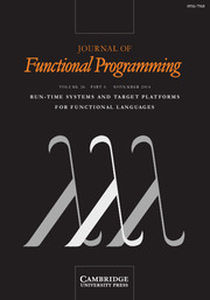Crossref Citations
This article has been cited by the following publications. This list is generated based on data provided by Crossref.
Harrington, Christian
Dahl, Nicolai
Sestoft, Peter
and
Christiansen, David Raymond
2014.
Pension reserve computations on GPUs.
p.
3.
Bahr, Patrick
Berthold, Jost
and
Elsman, Martin
2015.
Certified symbolic management of financial multi-party contracts.
p.
315.
Bahr, Patrick
Berthold, Jost
and
Elsman, Martin
2015.
Certified symbolic management of financial multi-party contracts.
ACM SIGPLAN Notices,
Vol. 50,
Issue. 9,
p.
315.
Nalinda, Chamin
and
Keppitiyagama, Chamath
2017.
Domain specific language for specifying operations of a central counterparty.
p.
1.
Egelund-Müller, Benjamin
Elsman, Martin
Henglein, Fritz
and
Ross, Omri
2017.
Automated Execution of Financial Contracts on Blockchains.
Business & Information Systems Engineering,
Vol. 59,
Issue. 6,
p.
457.
Egelund-M ller, Benjamin
Elsman, Martin
Henglein, Fritz
and
Ross, Omri
2017.
Automated Execution of Financial Contracts on Blockchains.
SSRN Electronic Journal ,
Biryukov, Alex
Khovratovich, Dmitry
and
Tikhomirov, Sergei
2017.
Financial Cryptography and Data Security.
Vol. 10323,
Issue. ,
p.
453.
Finkbeiner, Bernd
Klein, Felix
Piskac, Ruzica
and
Santolucito, Mark
2017.
Vehicle Platooning Simulations with Functional Reactive Programming.
p.
43.
Pope, Jeremy
Saget, Jules
and
Seger, Carl-Johan H.
2020.
Cephalopode: A custom processor aimed at functional language execution for IoT devices.
p.
1.


Discussions
No Discussions have been published for this article.